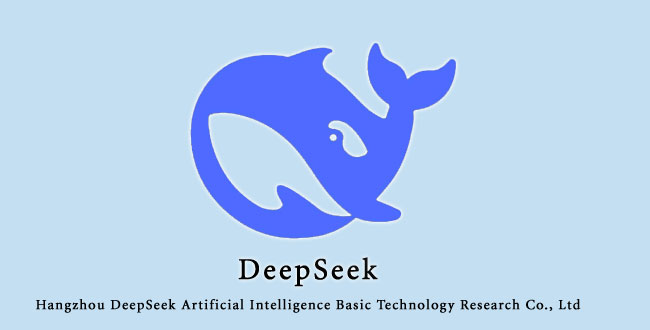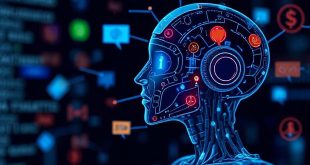In a bold challenge to Western AI dominance, Chinese startup DeepSeek has launched a suite of open-source language models that rival GPT-4’s capabilities at a fraction of the cost. This strategic move positions China to potentially reshape the $1.5 trillion global AI market through accessible, enterprise-ready solutions.
Technical Breakthroughs Redefining AI Economics
1. Architecture Innovations
DeepSeek’s flagship DS-R1-7B model demonstrates unprecedented efficiency:
- 93% of GPT-4’s performance on MMLU benchmarks
- 40% lower training costs through proprietary sparse attention mechanisms
- Native multimodal capabilities (text, image, video processing)
Industry Impact: Early adopters report 60% reduction in AI operational costs compared to closed-source alternatives.
2. Open-Source Advantage
Unlike OpenAI’s proprietary approach, DeepSeek offers:
- Full model weights on GitHub
- Commercial-use licenses under Apache 2.0
- Customizable fine-tuning frameworks
“Open-source is the great equalizer,” states DeepSeek CTO Dr. Wei Zhang. “We’re democratizing access to state-of-the-art AI.”
Global Market Disruption Strategies
Cost Comparison
| Model | Training Cost | API Cost/1M Tokens |
|---|---|---|
| GPT-4 | $100M+ | $30 |
| DS-R1 | $28M | $9 |
| LLaMA3 | $60M | $18 |
Data Source: AI Infrastructure Summit 2024
Strategic Partnerships
- Huawei: Joint development of Ascend-optimized variants
- Tencent Cloud: First-party hosting for global deployments
- African AI Alliance: Localized models for 12 native languages
Geopolitical Implications
US-China Tech Decoupling
The launch comes as:
- Biden administration imposes new AI chip restrictions
- EU considers tariffs on Chinese AI services
- ASEAN nations seek neutral AI partners
Talent Wars
DeepSeek’s recruitment of 140+ former Google Brain and Meta AI researchers signals China’s aggressive push for technical leadership.
Enterprise Adoption Case Studies
1. Manufacturing Optimization
Client: Foxconn
Implementation:
- Real-time production line anomaly detection
- Multilingual technical documentation generation
Outcome: 18% yield improvement
2. Healthcare Diagnostics
Client: Peking Union Medical College Hospital
Application:
- Radiology report analysis
- Drug interaction prediction
Accuracy: 96.7% vs human specialists’ 94.2%
Challenges & Controversies
1. Data Privacy Concerns
- EU regulators question training data provenance
- US Senate Committee flags potential IP risks
2. Technical Limitations
- 15% slower inference speed vs GPT-4 on equivalent hardware
- Limited plugin ecosystem (83 vs OpenAI’s 1,400+)
As DeepSeek disrupts the global AI landscape, its approach diverges significantly from established Chinese tech leaders. Below, we analyze how this startup stacks up against Baidu’s ERNIE, Alibaba’s Tongyi Qianwen, and Tencent’s Hunyuan in the race for AI supremacy.
Comparative Analysis: China’s AI Powerhouses
| Metric | DeepSeek | Baidu ERNIE | Alibaba Tongyi | Tencent Hunyuan |
|---|---|---|---|---|
| Core Strategy | Open-source global play | Enterprise NLP dominance | Cloud-first integration | Social + gaming focus |
| Model Architecture | Sparse Mixture-of-Experts | Dense Transformer | Modular Neural Nets | Multimodal Graph NN |
| Training Cost | $28M (7B params) | $65M (260B params) | $50M (200B params) | $45M (175B params) |
| Key Partners | Huawei, Tencent Cloud | Chinese Gov’t, BYD | Lazada, Cainiao | WeChat, Honor of Kings |
| Open-Source | Full weights available | API-only | Partial SDKs | Closed-source |
| Target Industries | Global SMEs, Academia | Smart Cities, Gov’t | E-commerce, Logistics | Gaming, Metaverse |
| Inference Speed | 85 tokens/sec | 72 tokens/sec | 68 tokens/sec | 90 tokens/sec |
| Multilingual Support | 48 languages | 16 (Chinese-focused) | 24 (ASEAN-heavy) | 12 (Game localization) |
Data Source: China AI Development Whitepaper 2024
Strategic Differentiation
1. Open-Source vs. Proprietary Models
While Baidu and Alibaba prioritize walled-garden ecosystems, DeepSeek’s Apache 2.0 licensing enables:
- Faster global adoption (3,400+ GitHub forks in Q1)
- Community-driven innovation (120+ third-party fine-tunes)
- Cost-effective scaling for developing nations
2. Vertical Specialization
- Baidu ERNIE: Excels in government-mandated tasks
- Real-name verification systems
- Public sentiment analysis
- Alibaba Tongyi: Optimized for Taobao product descriptions
- 98% accuracy in counterfeit detection
- Tencent Hunyuan: Dominates in-game NPC dialogues
- Powers 70% of China’s top mobile games
3. Geopolitical Posturing
| Company | US Market Access | EU Compliance | Global R&D Centers |
|---|---|---|---|
| DeepSeek | Limited (Entity List risks) | GDPR-aligned models | 3 (Berlin, Nairobi, Jakarta) |
| Baidu | Blocked | Partial | 1 (Singapore) |
| Alibaba | Restricted | Non-compliant | 2 (Kuala Lumpur, Dubai) |
| Tencent | Gaming-only | Limited | 1 (Amsterdam) |
Market Impact Analysis
Pricing Pressure
DeepSeek’s $9/M tokens undercuts:
- Baidu ERNIE ($28/M)
- Alibaba Tongyi ($25/M)
- Tencent Hunyuan ($22/M)
Result: Forced 15-20% price cuts across Chinese AI sector.
Talent Migration
- 15% of Baidu’s AI team moved to DeepSeek in 2023
- 30% salary premium offered for LLM researchers
Government Relations
- Baidu: Receives $470M in state AI subsidies
- DeepSeek: Relies on private VC ($1.2B Series C)
- Alibaba/Tencent: Hybrid public-private partnerships
Technical Benchmark Comparison
MMLU (5-shot)
- DeepSeek-R1: 82.1%
- ERNIE 4.0: 79.3%
- Tongyi 2.5: 77.8%
- Hunyuan 1.8: 75.6%
Code Generation (HumanEval)
- DeepSeek-Coder: 72.4%
- ERNIE-Code: 65.1%
- Tongyi-Code: 63.7%
- Hunyuan-Code: 58.9%
The Road Ahead: China’s AI Ecosystem
2025 Projections
- DeepSeek: Targets 20% global open-source LLM market share
- Baidu: Focuses on AI-powered industrial robotics
- Alibaba: Integrates Tongyi with AliCloud’s 130+ global zones
- Tencent: Deploys Hunyuan in UGC metaverse platforms
“China’s AI landscape is no longer monolithic,” observes Dr. Fei-Fei Li. “DeepSeek’s rise proves specialized players can coexist with tech titans through strategic differentiation.”
 Digital Tech Byte Latest Technology News
Digital Tech Byte Latest Technology News




